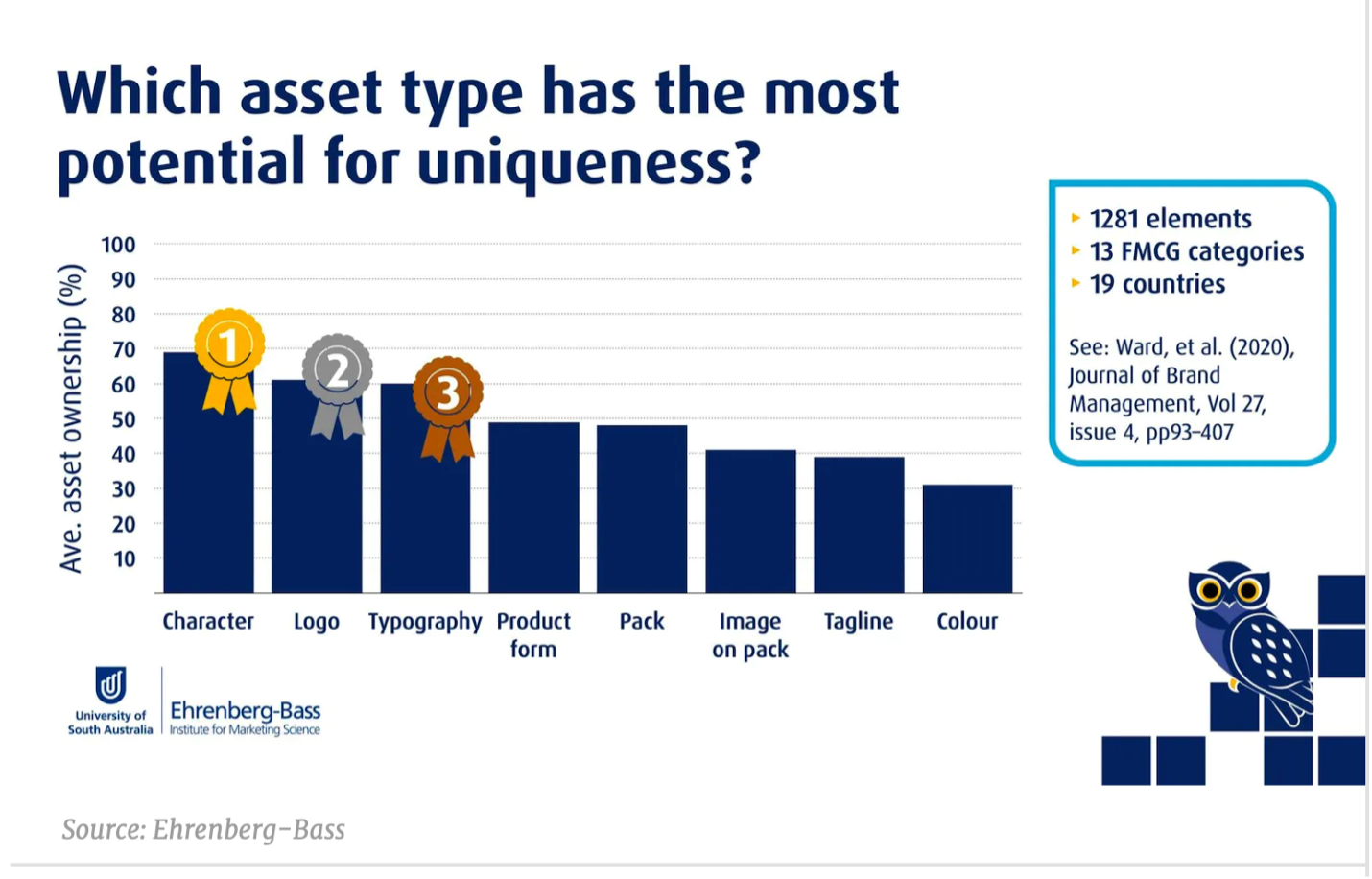It got me thinking about brand characters and how many of them are a B2C phenomenon. There are some in the B2B world and I know Salesforce has developed brand characters (Astro and friends) and they’re reportedly doing very well, but as a rule they’re thin on the ground.
The rationale for using them is very clear and the Ehrenberg-Bass Institute has lots of research to back this up. In fact, they’ve published a chart that shows a brand character is the most visually distinctive asset a business could use.
The case has been made, so the question becomes, why are they not used? I’ve spent a week or so pondering this question and think a lot of it is tied up in the incorrect but powerful received wisdom around B2B and B2C purchases. It gives the impression that business purchases are all about the rational and the logical, whereas consumer purchases are about the fun and the emotional. In this sense the idea of a mascot seems to fit squarely with the latter.
Rory Sutherland’s theory about ‘defensive decision making’ in business also has a role to play here. He explains that … in defensive decision-making, someone (a doctor, a consultant, a chief executive) makes a decision under the strong influence of an unconscious bias. Although they think they are making an optimal decision given the available information, in fact they are heavily influenced by a second consideration: not “what is the best decision I could make for my patient/company?” but “what is the decision I could make which has the least worst-case consequences for me personally?”
We (as agencies) like to think we’re immune to these biases – that we have the objective clarity to make the right suggestions and recommendations for our clients. It’s wrong of course, as I’m finding out right now. You see, we have two current B2B brand projects on our books and we’re at the right point in the project that if we believe developing a brand character could become a distinctive brand asset – then we need to make that recommendation now.
However, the thought of doing so does bring me out in a bit of a cold sweat. Why is that? Because when push comes to shove, I’m subject to all the same biases as above. That and the fear of the client’s reaction when we reveal we’ve spent their budget creating visuals for a fluffy brand gonk. (OK that’s maybe not quite how it would go down, but you know what I mean).
When we’re working with B2B clients, we sometimes have to work hard to convince them that we’re commercial and pragmatic in our outlook for them and their brand. That brand strategy is business strategy. And telling them that our job’s not to come in and change everything …we’ll keep the best of what there is and evolve the rest.
Brand isn’t particularly well understood and many of the challenges they’re experiencing have been defined using other terms, like comms or messaging. We know it all tracks back to brand; but this serves to illustrate how we’re on different pages and this fosters a sense of suspicion that can be difficult to shake.
So, it feels like a big risk to put that credibility on the line by suggesting something which, at first glance, could be seen as a bit naive, reinforcing the negative stereotype about designers being fluffy in their thinking and underlining that suspicion about brand.
In the end, I guess a compromise could be to present them with two options: one with a mascot and one without, packaging up the context and rationale appropriately. But I find the professional dilemma interesting: knowing that something is the right thing to do but shying away from it for fear of ridicule. Our clients hire us because they want the best advice around brand. And our vision states that we’re here “to make brands and branding better understood, respected and valued.” And when I think about it that way, then we’re doing the right thing by at least introducing the idea into the narrative: we make recommendations, but our clients make decisions.
